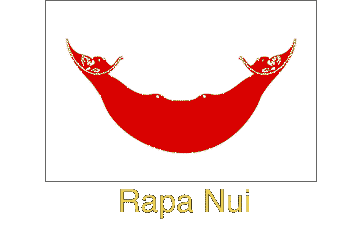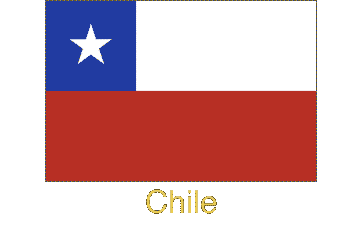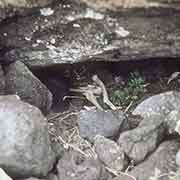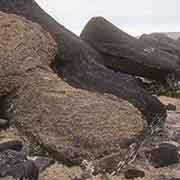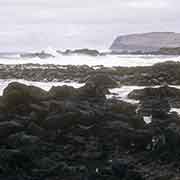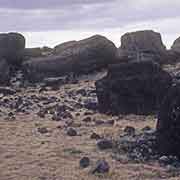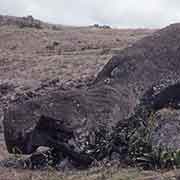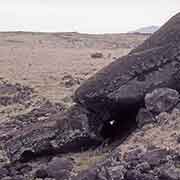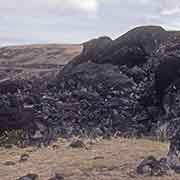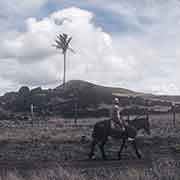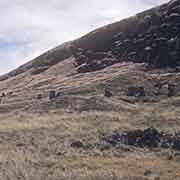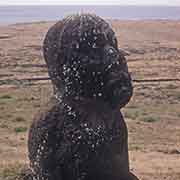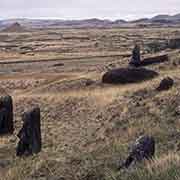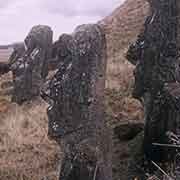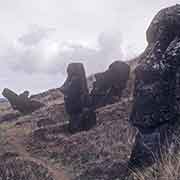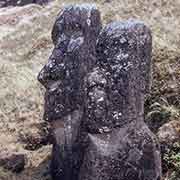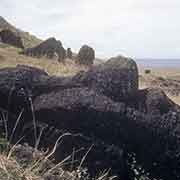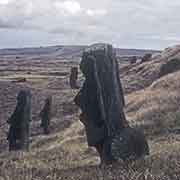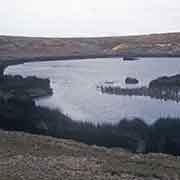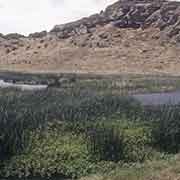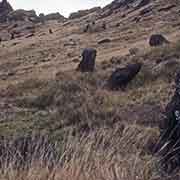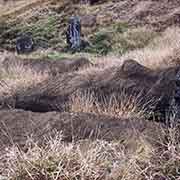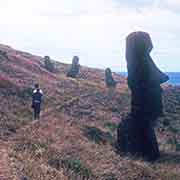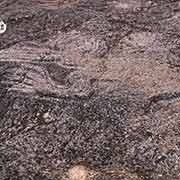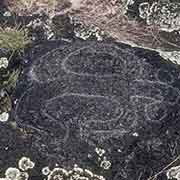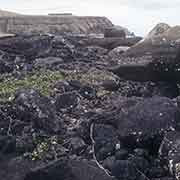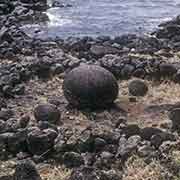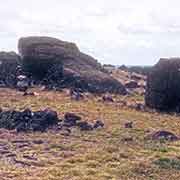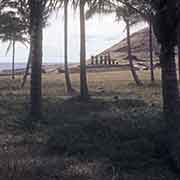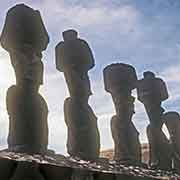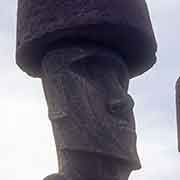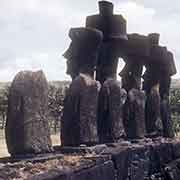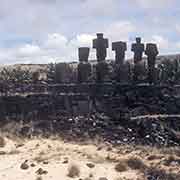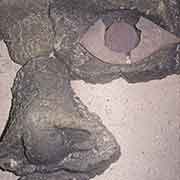Photos of The northeast of Rapa Nui
The northeast of Rapa Nui
Akahanga or Aka Hanga, on the south-east coast of the island, was an old village near a small bay (hanga). According to oral tradition, the first king of the island, the legendary Ariki Hotu Matu’a, was buried in this place. Near the coast is Ahu Akahanga, a large platform 18 metres in length, with 13 moai, all knocked down. Some lay face-down, others on their backs. They are between 5 and 7 metres in size and were left as they had fallen. Several of the “pukao” or headdresses of red volcanic scoria that topped the statues, lie there too. This ahu was not restored, showing the aftermath of the disturbances on the island, when the moai were all toppled; in 1840, none were left standing.
you may then send it as a postcard if you wish.
About eight kilometres to the northeast, is Rano Raraku, a volcanic crater formed of consolidated volcanic ash or tuff and this was the quarry from which almost all of the island’s moai sculptures were carved. Hundreds of moai were carved here, and about half remain, most buried up to the shoulders, so that only the enormous heads protrude. One incomplete statue still lies on its back, attached to the rock from which it was carved with space cut around it to finish it. After sculpting, the figures were stood upright in a pit previously excavated in the ground, to finish the carving of their backs. When the sculpting stopped, and the quarry was abandoned, they remained there; they were partially buried by the ramps of earth that had helped the moai stand up and layers of sediments that accumulated over time.
On the north coast of Rapa Nui is Papa Vaka, an archaeological complex with a large number of petroglyphs, carved into the basalt rocks. These bas-reliefs are all displaying items relating to the sea, like sea turtles, octopus, fish hooks and canoes - “Papa Vaka” means” Stone canoe” and refers to the largest petroglyph found, a 12 metres long double canoe. A carving depicting the Manu Tara Bird (sooty tern), the source of the Bird Man Cult can also be seen. Just west of Papa Vaka is Te Pito Kura (“navel of light”), where a curious rock with magnetic properties due to its high iron content lies in a circle of stones. One of the names given to it is Te Pito O Te Henua (“navel of the world”), which also was one of the names given by the Rapanui people to their island. The almost perfect ovoid stone was formerly known as Tita’a Hanga’ O Te Henua, and according to legend, was brought by Hotu Matu’a, the founding king of the Rapanui people, in his boat from his native land. It is said that this rock, almost spherical and smooth, concentrates magnetic and supernatural energy called mana. Nearby is the toppled Paro moai, the largest statue transported from the Rano Raraku quarry and erected successfully on its ahu or platform. Its height was 10 metres, and it is estimated that its weight must exceed 80 tons. It seems that this would have been one of the last statues to be knocked down from its ahu, shortly after 1838, since after this date there are no records of visitors seeing a standing moai. It lies face down, and the body is cut in half as a result of its collapse. In front of its head lies its gigantic “pukao”, almost two metres high and about ten tons in weight, also considered one of the most voluminous headdresses carved and transferred from the quarry of Puna Pau.
On the north coast of Rapa Nui is the only white coral sand beach in the island, Anakena. According to island oral traditions it is the landing place of Hotu Matu’a, a Polynesian chief who led a settlement party in a huge double-hulled canoe and founded the first settlement on Rapa Nui. It was later a ceremonial centre where islanders read from Rongorongo boards. There are two restored ahu, ceremonial platforms, here: Ahu Ature with one moai and Ahu Nao-Nao has seven, with four wearing the pukao, the hat-like structures or topknots. They display bas-relief carvings on their backs. When the moai were restored in 1978, an eye was discovered here. It is made of white coral with a red scoria pupil. The eyes were placed on the moai when it stood on its ahu, but it is still unclear whether they were placed permanently or only during special ceremonies. It is displayed in the Rapa Nui Museum. Anakena also featured in the Tangata manu or Birdman cult: when the new Birdman was from the western clans, he would end his celebrations here. There is also a palm grove here, planted in the 19th century.
